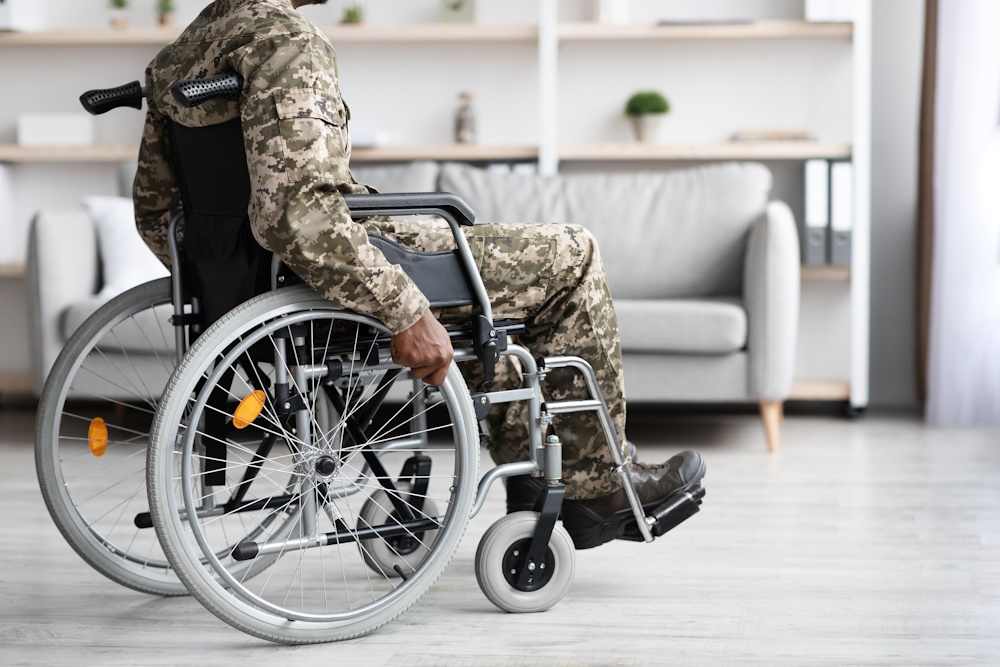What Are Temporary Disability Benefits?
Temporary disability benefits are financial assistance programs designed to replace a portion of lost income for individuals who are temporarily unable to work due to short-term illness, injury, or medical conditions. Unlike long-term disability or Social Security Disability Insurance (SSDI), which address permanent or extended disabilities, temporary disability benefits specifically cover conditions expected to improve within less than a year.
These disability benefits typically replace 40% to 70% of your pre-disability wages, with most programs providing around 50% to 66% of your regular income. The goal is to maintain financial stability while you focus on recovery and eventual return to work.
Types of Temporary Disability Programs
1. Short-Term Disability Insurance (STD)
Short-term disability insurance is the most common form of temporary disability coverage, often provided through employer benefit packages or purchased individually. STD covers non-work-related illnesses, injuries, and medical conditions, including pregnancy and childbirth.
Key Features:
- Coverage duration: 3 to 52 weeks (typically 9-26 weeks)
- Benefit amount: 40% to 70% of gross wages
- Waiting period: 3 to 30 days (commonly 7-14 days)
- Premium payment options: Employer-paid, employee-paid, or shared
2. Workers’ Compensation Temporary Disability
Workers’ compensation provides temporary disability benefits specifically for work-related injuries and illnesses. This coverage is mandatory in most states and includes two main categories:
Temporary Total Disability (TTD): For employees completely unable to work due to a work-related condition, providing approximately two-thirds of average weekly wages.
Temporary Partial Disability (TPD): For workers who can perform limited duties but earn less than their pre-injury wages, compensating for the wage difference.
3. State-Mandated Temporary Disability Insurance
Only six states and territories require employers to provide temporary disability insurance for non-work-related conditions:
- California (State Disability Insurance – SDI)
- Hawaii (Temporary Disability Insurance)
- New Jersey (Temporary Disability and Family Leave Insurance)
- New York (Short-Term Disability)
- Rhode Island (Temporary Disability Insurance)
- Puerto Rico (Disability Benefit Act)
Each state program has specific eligibility requirements, benefit calculations, and duration limits that vary significantly.
Qualifying Conditions for Temporary Disability Benefits
Temporary disability benefits cover a wide range of medical conditions that temporarily prevent you from performing your regular job duties. Common qualifying conditions include:
Physical Conditions
- Fractures, sprains, and musculoskeletal injuries
- Post-surgical recovery periods
- Severe burns or wounds
- Back problems and spine-related injuries
- Cardiovascular conditions requiring extended rest
- Respiratory illnesses like severe pneumonia
- Vision disorders affecting work ability
Pregnancy and Childbirth
- Normal pregnancy complications
- Childbirth and postpartum recovery
- Pregnancy-related medical conditions
- Cesarean section recovery
Mental Health Conditions
- Severe depression requiring treatment
- Anxiety disorders affecting work performance
- Work-related stress and burnout
- Post-traumatic stress disorder (PTSD)
Recent Health Concerns
- COVID-19 and related complications
- Required quarantine or isolation periods
- Long COVID symptoms affecting work capacity
Eligibility Requirements and Application Process
General Eligibility Criteria
While specific requirements vary by program and state, common eligibility factors include:
Medical Certification: A licensed physician must certify that your condition prevents you from performing your regular job duties and provide an estimated recovery timeline.
Employment History: Most programs require a minimum period of covered employment or specific earnings thresholds. For example:
- Hawaii requires 14 weeks of employment with at least 20 hours per week
- New Jersey requires 20 weeks of employment earning at least $283 weekly or $14,200 annually
Waiting Period: Most programs include an elimination period of 3 to 30 days before benefits begin, during which you must be unable to work.
Non-Work-Related Condition: For STD and state TDI programs, the condition must be non-occupational (work-related injuries fall under workers’ compensation).
Step-by-Step Application Process
- Immediate Notification: Inform your employer or supervisor about your disability as soon as possible.
- Obtain Claim Forms: Request the appropriate forms from your employer, HR department, or insurance provider.
- Complete Employee Portion: Fill out all required personal information, employment details, and condition specifics.
- Medical Documentation: Have your treating physician complete the medical certification, including:
- Diagnosis and treatment plan
- Work restrictions and limitations
- Expected duration of disability
- Anticipated return-to-work date
- Submit Documentation: File your completed claim within the required timeframe (typically 30-90 days from disability onset).
- Identity Verification: Some states require additional verification through services like ID.me to prevent fraud.
- Await Decision: Claims are typically processed within 2-4 weeks, with approval leading to benefit payments and denials including appeal information.
Benefit Calculation and Payment Duration
How Benefits Are Calculated
Temporary disability benefits are calculated as a percentage of your pre-disability earnings:
Benefit Percentage: Most programs provide 50% to 66% of your average weekly wage, with some offering up to 70%.
Maximum and Minimum Limits: All programs establish weekly benefit caps and floors based on state average wages or statutory limits.
Tax Implications:
- Workers’ compensation benefits are generally tax-free
- STD benefits taxability depends on premium payment method (pre-tax premiums = taxable benefits; post-tax premiums = tax-free benefits)
Duration Limits
Short-Term Disability: Typically 9 to 52 weeks, with most policies providing 26 weeks of coverage.
Workers’ Compensation: Generally up to 104 weeks within five years in California, with extensions possible for severe injuries.
State TDI Programs: Range from 26 weeks (Hawaii, New Jersey) to 52 weeks (California), depending on the state.
Coordination with Other Benefits
Understanding how temporary disability benefits interact with other programs is crucial:
Family and Medical Leave Act (FMLA)
- Key Difference: FMLA provides unpaid, job-protected leave; temporary disability provides paid benefits
- Coordination: Many employees use both simultaneously for maximum protection
- Job Protection: FMLA guarantees position security; STD alone does not
Social Security Disability Benefits
- Duration Difference: SSDI covers long-term disabilities (12+ months); temporary disability covers short-term conditions
- Waiting Periods: SSDI has a five-month waiting period; temporary disability begins after elimination period
- Offset Rules: Combined benefits may be reduced if they exceed 80% of pre-disability earnings
Sick Leave and PTO
- Elimination Period: Can be used to cover waiting periods before benefits begin
- Supplementation: May supplement partial disability payments in some cases
- Coordination Rules: Some employers restrict simultaneous use to prevent overpayment
Common Denial Reasons and Appeals Process
Frequent Denial Causes
Insufficient Medical Evidence: Incomplete or unclear medical documentation failing to establish work limitations.
Eligibility Issues: Not meeting employment history, earnings, or coverage requirements.
Pre-existing Conditions: Some private policies exclude conditions present before coverage began.
Treatment Non-compliance: Failing to follow prescribed treatment plans or attend medical appointments.
Work-Related Classification: Injuries deemed occupational when applying for non-occupational coverage.
Appeals Process
If your claim is denied, you have appeal rights:
- Review Denial Letter: Understand specific reasons for denial and required documentation.
- Gather Additional Evidence: Obtain comprehensive medical records and physician statements.
- File Formal Appeal: Submit written appeal within specified timeframe (typically 30-180 days).
- Independent Medical Examination: May be required to resolve medical disputes.
- Legal Consultation: Consider attorney assistance for complex cases or repeated denials.
Maximizing Your Short-Term Disability Benefits
Before You Need Benefits
Understand Your Coverage: Review employer-provided STD policies and state program requirements.
Maintain Medical Records: Keep comprehensive health documentation and establish relationships with healthcare providers.
Emergency Fund: Build savings to cover waiting periods and benefit gaps.
During Your Claim
Document Everything: Keep detailed records of medical appointments, treatments, and work limitations.
Communicate Regularly: Stay in contact with claims administrators and provide requested information promptly.
Follow Treatment Plans: Comply with all medical recommendations to avoid benefit termination.
Know Your Rights: Understand appeal processes and deadlines for challenging adverse decisions.
Future Trends and Considerations
The temporary disability benefits landscape continues evolving, with several trends emerging:
Increased Mental Health Coverage: Growing recognition of mental health conditions as legitimate disabilities requiring coverage.
Remote Work Adaptations: Programs adapting to evaluate disability in remote work environments.
Technology Integration: Digital claims processing and telemedicine evaluations becoming more common.
Policy Expansions: Some states considering temporary disability program implementation or benefit enhancements.
Conclusion
Temporary disability benefits provide essential financial protection during some of life’s most challenging moments. Whether through employer-sponsored short-term disability insurance, workers’ compensation, or state-mandated programs, these benefits offer crucial income replacement when you’re unable to work due to illness or injury.
Don’t wait until you need these benefits to understand them. Review your current coverage options, familiarize yourself with your state’s programs, and ensure you’re prepared to access the support you’ve earned when life’s unexpected challenges arise. Your future financial stability may depend on the knowledge and preparation you invest today.
At Benefits.com, we aim to point you in the right direction towards all the benefits available to you. Take our free eligibility quiz today to get started!
 Benefits.com Advisors
Benefits.com Advisors
With expertise spanning local, state, and federal benefit programs, our team is dedicated to guiding individuals towards the perfect program tailored to their unique circumstances.
Rise to the top with Peak Benefits!
Join our Peak Benefits Newsletter for the latest news, resources, and offers on all things government benefits.




















